This website is supported by its readers. If you click one of my links I may earn a commission. I am also a participant in the Amazon affiliates program and I will also earn a commission from qualified purchases.
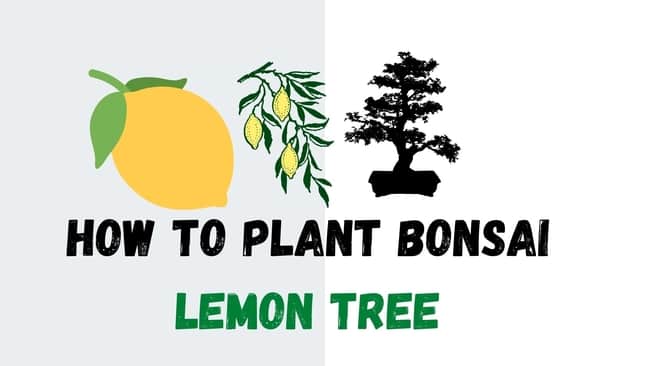
So now that I have been growing bonsai trees for 3 years, I want to start branching out (pun most definitely included) into some other varieties. One species I’ve always wanted to experiment with is Lemon tree bonsai. So how exactly do you plant a bonsai Lemon tree?
To plant a bonsai Lemon tree, remove the seeds from a Lemon, removing any mulch in the process. Ensure your seeds are wet. Then place in a pre-moistened potting soil mix of akadama, volcanic ash rock, and pumice. Place the seed half an inch deep and cover with topsoil.
Water and care for the seeds and after a year, training can begin.
So what is the exact step-by-step process if you want to plant a bonsai Lemon tree? And how exactly do you care for a planted bonsai Lemon tree? Keep reading to find out more!
Just a quick heads up, over the past three years of running Plantpaladin, hundreds of people have asked for product recommendations. As such, You can find my favorite indoor bonsai tree here (link takes you to Bonsaiboy), my favorite outdoor bonsai tree (link takes you to Bonsaiboy), or have a look at all the products I recommend here.
How To Plant A Bonsai Lemon Tree
As the summer approaches, I’ve noticed a large increase in the number of people who are interested in adding fruiting bonsai trees to their collections.
With an estimated 30 different varieties of Lemons, citrus bonsai-like Lemon trees are surging in popularity.
As such, I decided to start growing one of these trees myself.
So I scoured the web, visited a few bonsai experts, and even got in touch with my local botanical gardens to find out exactly how to plant a bonsai Lemon tree.
To summarize:
- Lemon trees can be successfully grown both from cuttings and seeds into bonsai Lemon trees.
- The seeds typically require warmer conditions – typically a minimum temperature of 50 to 55 degrees F (10 to 13 degrees Celsius) at night is required to grow these trees.
- Lemon tree bonsai however can be successfully grown in hardier climates like the UK and the East Coast of the USA by bringing them indoors during the winter.
- Lemon tree bonsai are very easy to grow and can be grown both in organic soil such as soil-based compost or grown in inorganic bonsai soil such as a mix of akadama, volcanic ash rock, and pumice.
- To grow, ensure that the topsoil is moist and your seeds are moist, dry Lemon seeds or cuttings will not grow.
- Place your seed half an inch in the potting soil and cover.
- After about 1 month your bonsai Lemon tree seed will have sprouted and you should start to see new growth.
- It will then take between 3 and 5 years for these seeds to reach mature bonsai trees that you can then train.
- Fruit too can start to be expected in 3 to 5 years.
How To Plant A Bonsai Lemon Tree – quick facts
Lemon Tree Bonsai | Requirement |
Watering | Water once per day in the spring and summer, checking if the soil is dry to touch. Water twice per week in winter. Avoid lime or Lemon water |
Sunlight | 6-8 hours of direct sunlight in the summer months. Move into the shade at the hottest part of the day. |
Temperature | A minimum night temperature of 50 degrees (10 C) is required. Do not exceed temperatures of 90 degrees which can burn the bonsai Lemon tree. |
Fertilizer | Fertilize once every two weeks in the spring and summer. Fertilize once per month in the winter, Fertilizing can also be avoided in winter. |
Repotting | Every 2-to-3 years |
Placement | Outdoors in the spring and summer can be moved indoors in the winter or when temperatures drop too low. |
Type | Coniferous (leaves do not fall off during winter) - Citrus species. |
Wire type | Both Copper and Aluminum |
Time to mature from seed | 3 to 5 years |
Potting soil | Both Inorganic mixes like akadama and volcanic ash rock and organic mixes such as peat and soil based compost can be used. |
Growth type | Fast - adding 12 to 36 inches of growth per year |
Size | One to two-hand, most do not exceed 1.5 metered if grown in a pot. |
Lifespan | 50 to 100 years, longer if bonsai has been maintained correctly. |
What do you need to plant a bonsai Lemon tree?
So now we know that you can plant a bonsai Lemon tree, what will you need to successfully grow your tree?
The following list should help:
- Lemon seeds or Lemon tree cuttings
- Potting soil (either organic or inorganic)
- Plastic wallets, paper towels, or sphagnum moss (optional) – used for stratification if need be.
- Bonsai pot – For when you repot your Lemon bonsai tree after its first year. Yogurt pots work well in the first instance
- Propagator (optional)
- Copper wire – used later on in the growth of your tree to train your bonsai
- Bonsai tools – cutters, shears, and blades will all be used later on in your Lemon bonsai trees life to train and style your tree.
- Artificial light – if you live in a cold climate and keep your Lemon tree indoors
- A fleece – In case the summer temperature drops below the minimum requirements for a few days – will prevent you from moving your planted Lemon bonsai tree prematurely.
How to plant a bonsai Lemon tree – the process
So let’s break down the exact step-by-step process of how exactly you plant a bonsai Lemon tree.
Decide on the size and style of your Lemon bonsai
First up when comes to planting bonsai is a step that all too often people miss.
Heck, it was a step I missed!
But trust me when I say doing this, will save you a lot of heartbreak down the line.
Take 30 minutes to describe how big you want your tree to grow.
Bonsai trees are typically categorized in different size classifications.
If you want your Lemon bonsai tree to compete, then having an idea of the ideal size of your tree is worth noting at this early stage.
With the Lemon tree being a fast-growing bonsai tree, getting to grips with the size of your tree will just streamline this process.
The style of your tree
Whilst the size of your tree is one thing, another major component people forget when growing bonsai is the style of their trees.
Bonsai trees and Lemon bonsai in particular come in a wide variety of styles such as cascade semi-cascade and sumo to name a few.
Each of these will need to be trained and shaped in its unique way, often requiring years of work to achieve.
Deciding on the rough style you want your Lemon tree to look like early on will save you a lot of time later on in the training process.
I like to do this by drawing up a rough design on paper
The type of Lemon tree
Lemon trees come in over 30 varieties, some of which harvest and grow at different times of the year.
The shape, color, and style of the Lemons they produce will vary and so it is important to take note of the exact species of bonsai Lemon tree you want to grow before investing in seeds.
Ensure it’s the right time of year
So before you plant your bonsai Lemon tree either from a seed or cutting you need to take into account one major consideration.
The time of year.
Lemon bonsai trees tend to thrive in bright warm outdoor conditions and can be placed outdoors during warmer temperatures – typically from Mid June until late September.
This then has a knock-on effect in terms of the time of year you plant your bonsai Lemon tree seeds.
What is the best time of year to plant bonsai Lemon tree seeds?
The best time of year to plant bonsai Lemon tree seeds will be Mid-April if you live in a hardy climate that only gets warm during the summer. If you live in a warmer climate or are keeping your Lemon tree indoors, seeds can be planted at any time of the year.
Seed vs cuttings
Next up you need to decide if you want to plant your Lemon bonsai from seed or a cutting.
Typically there are 3 main ways you can grow your bonsai:
- From a seed from a Lemon
- Buying Lemon seeds
- Cutting
Each of these has its pros and cons.
Growing from a seed from a Lemon
My favorite, the easiest, and the method most of you will be following will be to grow your Lemon bonsai will grow your seeds from an existing Lemon.
Regardless of whether you are using the seeds from your local supermarket Lemons or another Lemon tree, this is a very easy method.
Simply remove the mulch, keep your seeds moist and you should be good to go.
The main benefit of this method is that it is extremely cost-effective as all you will be paying for is the price of a Lemon.
The only downside to this method is the variety of Lemon seeds, with most of you only being able to find species that are stocked by your local supermarkets and won’t be able to grow out any of the rarer varieties.
Buying Lemon seeds
Another option is to simply buy your Lemon tree seeds, either for a reputable retailer or online via Amazon.
The main benefit of doing so is that this will expand the types and varieties of Lemon trees you can grow, allowing your bonsai to stand out from other Lemon tree bonsai.
This however can be costly with increased import fees.
Stratification may also be required if you are using tropical types of Lemons that are grown and harvested at different times of the year.
Using a cutting
Finally, if you are in a rush and want a Lemon bonsai in as short a space as possible, then consider using a cutting.
Cuttings will allow you to grow a bonsai tree in a very short period, with a lot of the growth that is needed in your Lemon tree’s first few months already taken care of.
The only downside to this is that using cuttings can be a little bit more difficult as a beginner than just planting from seed.
Prepare your seeds
So now the background to plating a bonsai Lemon tree has been completed, it’s time to start growing your tree.
Let’s start by growing your bonsai Lemon tree using seeds.
Most of you however will want to use seeds from an existing Lemon.
To do so, first, cut your Lemon in half on a chopping board.
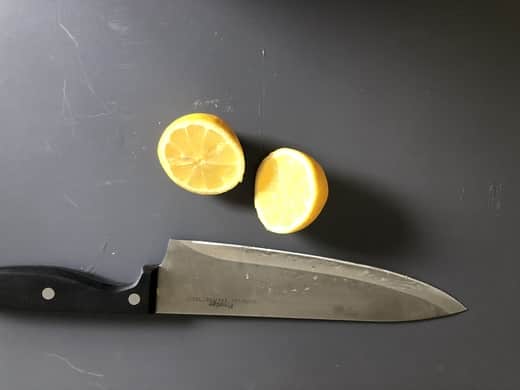
Then, remove any seeds that are small, shriveled, damaged, or cut, these seeds will not germinate.
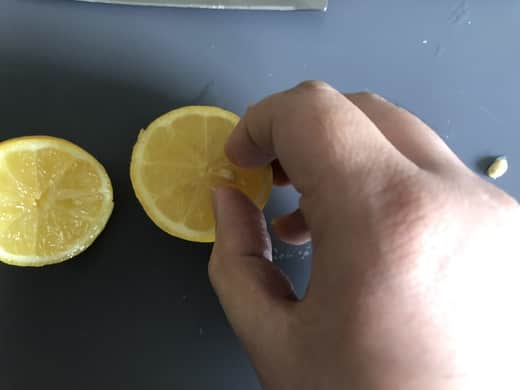
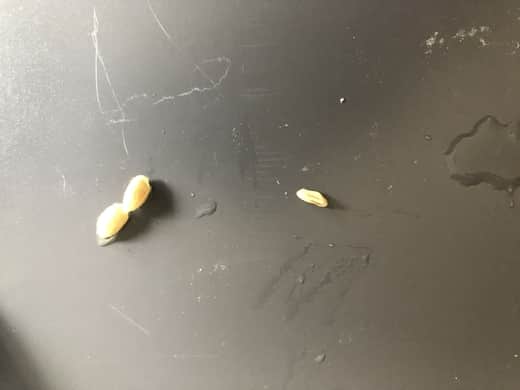
Place the Lemon seeds in a jug with water for 48 hours.
The seeds that sink to the bottom will be the ones you will use to grow, the other seeds will not germinate.
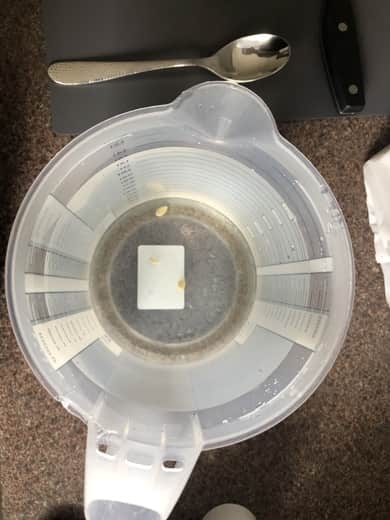
Next, we need to remove the outer excess from the seeds that would usually get washed away from the lemon acid.
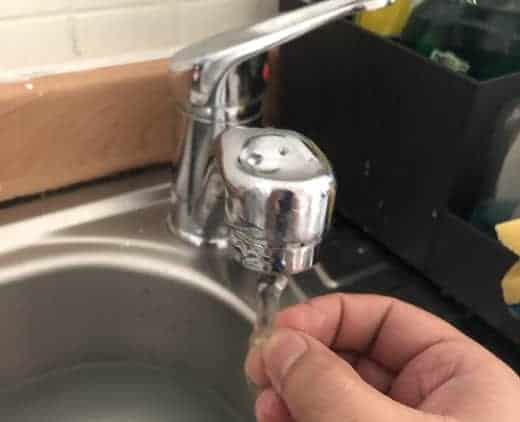
To do this then thoroughly wash the seeds of your Lemon seeds until the lemon taste has gone.
Now place your seed in a cup of water – do not let your seed dry out until you are ready to plant.
Do I need to stratify my bonsai Lemon tree seeds
Most Lemon seeds do not need to be stratified. This is because the majority of seeds used for Lemon bonsai are commonly locally sourced. Lemon seeds imported or purchased online may need to be stratified.
If then you need to stratify your Lemon seeds, it’s a fairly straightforward process.
Simply place your wet Lemon seeds in a plastic bag or box with a damp paper towel or sphagnum moss.
Keep in a cold space such as a fridge, anywhere from 2 weeks to three months, and your seeds will start to germinate.
Gather your potting soil
Next up, it’s time to prepare your bonsai Lemon tree potting soil.
One of the good things about Lemon and citrus trees, in general, is that when it comes to soil. They are fairly flexible.
Both organic and inorganic soil mixes work well then when planting bonsai Lemon trees.
For an inorganic soil mix, I would use a mix of 33% akadama, 33% volcanic ash rock, and 30% pumice or other grit.
For an organic mix, consider using a mix of 80% peat compost or another generic good compost medium with 20% grit such as pumice.
Place your potting soil in a tray
Next up, we need to gather your pots together.
Whilst you can place your seeds in individual terracotta or bonsai pots right away, in the first instance, I would place all of your seeds in a potting tray for seedlings like this one – the link takes you to Amazon

This is because not all of your seeds will not sprout, only about 20% of your Lemon seed will germinate.
To give your seeds the best chance of growing into Lemon trees use a tray.
Pour your preferred soil mix into your tray so that you have a nice even covering of soil.
Then using your finger make holes that are half an inch deep.
Plant your seeds
The moment you have all been waiting for… it’s time to plant your seeds!
To do so, ensure that your seeds are still wet (it’s why we kept them in water whilst we were sorting out our soil and tray)
Then gently place them in the holes and cover them with the remaining topsoil.
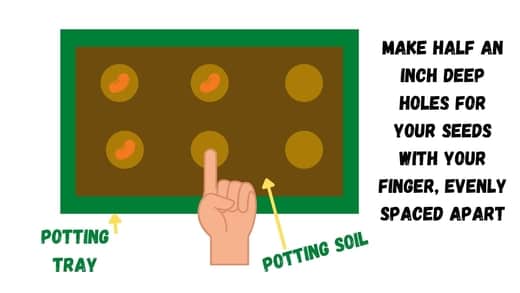
How many seeds should I plant?
As a rule of thumb, you want to plant as many seeds as possible in your plating tray.
This is because not all of the seeds will sprout into seedlings.
The more seeds you plant, the better your chances of growing a Lemon bonsai tree from seed.
Keep in a propagator
Whilst you can move your tray into position ( a bright warm sunny spot in your garden – just ensure you cover it with plastic to keep them moist ), one additional step I would take is to keep your Lemon seeds in a propagator.
Lemon needs warmer temperatures to thrive and this is especially the case in the first few weeks of planting your Lemon bonsai tree.
Using a propagator during this time will allow you to control the direct temperature and moisture levels that your seeds will need to grow.
Just ensure that you provide your seeds with enough direct sunlight and water during these first few weeks.
Lemon seeds will typically take 14 to 50 days to germinate.
Once you see new growth, you can remove the propagator and move your potting tray to a bright sunny spot for about 2 weeks.
This will help strengthen your seedling into the next step.
Move your Lemon bonsai into their pots
So after a few weeks in the propagator, your seeds will have turned into seedlings and will be strong enough to start growing in their pot.
Carefully remove your seedling from the potting tray and place it in a pot that has enough drainage holes for one year worth of growth.
Personally, for Lemon bonsai, I like to use terracotta pots that are easy to move as it is likely in winter you will need to move these trees indoors.
Place your potting soil in your new pot.
Make a half an inch indent with your finger and place your seedling in the indentation.
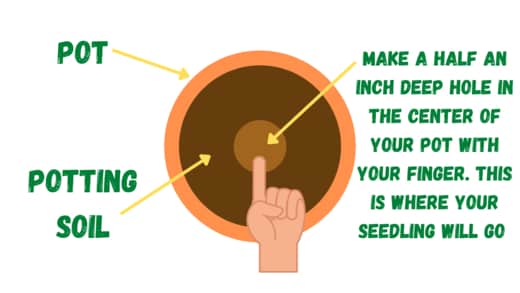
Then cover with potting soil.
Ensure you use fresh soil/potting mix for the new pot.
Then move your pot into a bright sunny spot in your garden.
Ensure that the temperatures do not drop below 50 degrees Fahrenheit. Should temperatures drop below this in the summer then cover with fleece.
As fall and winter approaches and temperatures drop below this consistently, move indoors into a bright spot (with a grow light if needed).
Do not keep your Lemon bonsai outdoors in cold climates.
Grow your Lemon bonsai
So for the next 3 to 5 years, all you will be focusing on is growing your Lemon bonsai through good aftercare.
To do so, ensure you provide your tree with enough sunlight, and water when the topsoil is dry.
Fertilize regularly and check for signs of insect infestation – we will go into more detail on this.
As Lemon trees are very fast growing you will need to repot your Lemon tree frequently. You can find out more on how to do this every 2 years or so here.
Train your Lemon bonsai
So, after 3 to 5 years or so, your Lemon tree will have matured, it will however not look like a bonsai tree.
At this stage then training will be required to transform your Lemon tree into a bonsai Lemon tree.
This will typically consist of doing the following:
- Developing the trunk of your tree – through growing out sacrifice branches, trunk bending, and trunk chopping
- Wiring the tree – to create movement in the branches of your tree forcing your tree to grow in a certain direction
- Deadwood techniques – help to add style and flair and make your bonsai look older than it seems.
- Prune your tree – Doing things like defoliating your tree can help create a denser thicker leaf canopy and a more aesthetically pleasing tree. This will help your tree keep its silhouette helping you achieve specific bonsai tree styles like a cascade style.
Just keep in mind that it will take a few years of repotting, pruning, and training before you will get a Lemon bonsai tree that you are happy with however with a little bit of hard work, it can be achieved.
Plant a bonsai Lemon tree from a cutting
As mentioned earlier, if you want to speed up the process of growing a Lemon bonsai tree, consider growing via a cutting.
The general process is a little different and so I’ve written a post on it here but to summarize:
- Remove the branch from an existing Lemon tree bonsai, ensuring you make the cutting at a 45-degree angle.
- Peel back the cambium until the inner wood is on display
- Gently place the bench in a pot or container filled with water – ensuring the inner wood is submerged. (using root hormone can help)
- After three to four weeks, new roots will have started to grow on the branch.
- You can then place it in a pot as you have done for the seedlings.
How to care for a planted bonsai Lemon tree
So now you know how to plant a bonsai Lemon tree, what are the care tips you will need to follow to grow your planted bonsai Lemon tree successfully?
Hopefully, the answers below will help shed some light:
Water requirements for bonsai Lemon tree?
Lemon bonsai tree should be watered when the topsoil is dry to the touch. During the summer topsoil should be checked 3 times per day to prevent soil from drying out. Watering once per day in the spring, summer, and fall and once per week in the winter will work for most trees.
Using rainwater and avoiding tap water can prove beneficial to prevent the soil ph from changing.
Sunlight requirements for bonsai Lemon trees
Lemon bonsai trees require a lot of sunlight and grow best when exposed to 6 to 8 hours of direct sunlight every day. Lemon bonsai can be moved in the shade during the hottest days in the summer when temperatures exceed 90 degrees F to prevent burning and sunscalding.
During the fall/winter and cooler springs, Lemon bonsai can be moved indoors, just ensure they are placed near a large window or you use an artificial grow light to ensure your tree gets enough light.
Temperature requirements for bonsai Lemon tree
Lemon bonsai trees perform best in temperatures between 50 degrees Fahrenheit (10 Celsius) and 90 degrees Fahrenheit (32 Celsius). Should temperatures drop below 50 Fahrenheit at night, you will need to move your bonsai indoors.
If temperatures exceed 90 can cause burning and sunscald in citrus fruits trees such as Lemon bonsai
Where to place my bonsai Lemon tree?
Bonsai Lemon trees perform best when placed outdoors, in bright, sunny warm conditions. Should temperatures drop below 50 Fahrenight overnight, they should be placed indoors. If growing indoors, maintain a consistent temperature and provide ample light through windows or grow lights.
How often should I fertilize my bonsai Lemon tree?
Lemon tree bonsai should be fertilized once every two weeks in the spring and summer and once per month in the fall/winter. Specialist liquid fertilizer for citrus trees will yield the best results.
What pests attack Lemon bonsai trees?
Spider-mites, Aphids, Scale, Mealybugs, Caterpillars, and vine weaves will all commonly attack Lemon bonsai tres if kept outdoors in warm conditions without a lot of sunlight.
To counter, either use natural pesticides such as wasps or ladybugs to attack these insects, blast with water, or use pesticides such as liquid soap or neem oil to remove.
To read up more on how to stop pests such as Aphids, Scale, Spider-Mites, and Caterpillars, read up my post on removing bugs here.
How long does it take to grow a planted Lemon tree bonsai
Bonsai Lemon trees will take 5 to 15 years to grow when planted from seed into a Lemon bonsai that produces fruit. These trees can start to be trained after one year. You can then expect fruit to start appearing on your tree from year 5 onwards.
The more complex your design and the style of the bonsai tree the more time it will take.
How fast-growing are Lemon bonsai trees?
Lemon bonsai trees are very fast-growing and can add between 12 and 36 inches of growth in one year. Regular pruning will be required to maintain a small-sized, one or two-handed bonsai tree. These trees then will typically reach maturity, with fruit in 5 to 15 years.
Are they beginner friendly?
Lemon bonsai trees are not beginner-friendly due to needing a lot of light and heat to grow. They can usually only be grown indoors with ample heat and light equipment.
Lemon bonsai however are amongst the easiest citrus tree to grow and have been cultivated by many living in cooler, darker climates.
How long does it take for fruit to start appearing?
It will typically take 3 to 5 years for Lemon to start appearing on your Lemon bonsai tree. The first 1 to 5 years of your Lemon bonsai trees life will be spent maturing. Some Lemon bonsai trees have not produced fruit for 15 years.
How long do Lemon bonsai trees live?
Most Lemon bonsai trees will live between 50 and 100 years. If cared for correctly, Lemon bonsai can live for up to 200 years. Lemon bonsai trees will live longer than traditional Lemon trees which have an average lifespan of 50 years.
Survey on planting Lemon tree bonsai
Finally, I wanted to finish up by asking 20 Plant Paladin readers who own Lemon bonsai trees if growing a Lemon bonsai tree is easy.
You can find the results below:
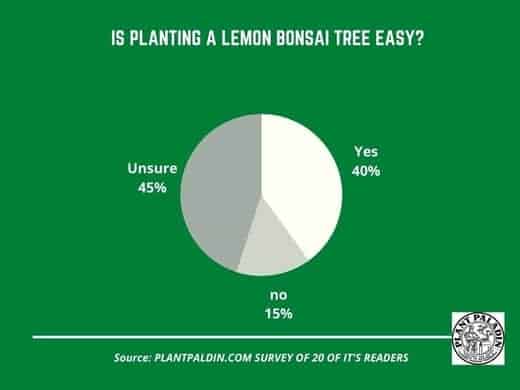
My top picks for the gear you will need!
So like I mentioned earlier, over the past three years of running PlantPaladin, hundreds of people have asked me for my recommendations on the best bonsai gear on the market.
Having spent thousands of dollars on bonsai items these past few years and tested at least 100 bonsai-specific products, I’ve listed my favorite products below – All of which I highly recommend and think you can get great value.
They can purchase directly by clicking the link to take them to Amazon.
Bonsai Tool Set: One of the significant challenges I’ve had is finding a toolset that was not only durable but didn’t break the bank. SOLIGT has recently developed a fantastic bonsai tool set that covers all the tools you need to trim, prune, and repot your trees. – You can grab it here.
Complete Bonsai Set: Many of you will want to grow your bonsai trees entirely from scratch, but finding the varicose seeds, pots, and other items in one place can be challenging. Leaves and Sole then have created a complete bonsai set that I’ve personally used that ticks all the boxes. You can grab it here.
Bonsai wire: The number of times I’ve run out of wire for my bonsai or purchased cheap bonsai wire that doesn’t do the job is embarrassing for me to admit. After a lot of trial and error, I found that using Hotop’s aluminum bonsai wire is one of the best options on the market. This can easily be used for both indoor and outdoor bonsai. You can grab it here.
This post was written by Fehed Nicass who has been passionate about bonsai for over 3 years. He currently resides in the UK and works in sales.


